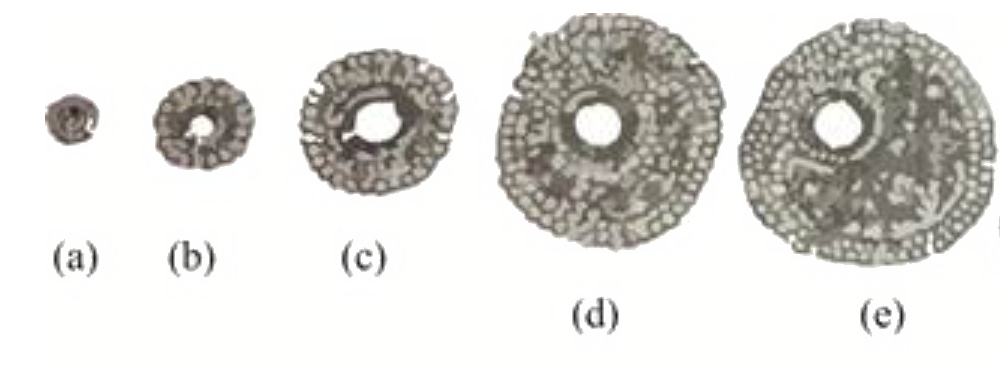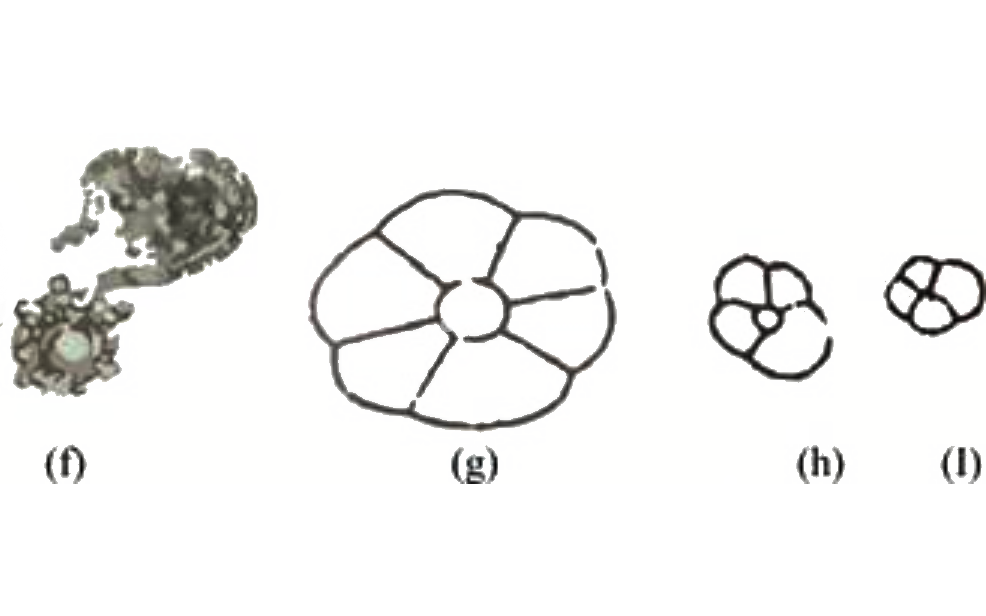Below is given the unorganised list of some important events in the human female reproductive cycle. Identify the correct sequence of these events and select the correct option.
(i). Secretion of FSH
(ii). Growth of corpus luteum
(iii). Growth of the follicle
(iv). Ovulation
(v) Sudden increase in the levels of LH
iii→i→iv→ii→v
i→iii→v→iv→ii
i→iv→iii→v→ii
ii→i→iii→iv→v
To identify the correct sequence of events in the human female reproductive cycle from the given list, we can analyze each event step by step.
1. Secretion of FSH (Follicle Stimulating Hormone):
- The cycle begins with the secretion of FSH from the anterior pituitary gland. FSH is crucial for the development of ovarian follicles.
2. Growth of the Follicle:
- Following the secretion of FSH, the ovarian follicles begin to grow and mature. This is the second step in the sequence.
3. Sudden Increase in the Levels of LH (Luteinizing Hormone):
- As the follicles grow, they produce estrogen, which eventually leads to a surge in LH levels. This surge is critical for triggering ovulation.
4. Ovulation:
- The peak in LH levels causes ovulation, which is the release of the mature egg from the dominant follicle.
5. Growth of Corpus Luteum:
- After ovulation, the remnants of the ruptured follicle transform into the corpus luteum, which secretes hormones like progesterone to prepare the uterus for potential implantation.
Correct Sequence:
The correct sequence of events is:
1. Secretion of FSH (i)
2. Growth of the follicle (iii)
3. Sudden increase in the levels of LH (v)
4. Ovulation (iv)
5. Growth of corpus luteum (ii)
Thus, the correct order is 1, 3, 5, 4, 2.
- The cycle begins with the secretion of FSH from the anterior pituitary gland. FSH is crucial for the development of ovarian follicles.
- Following the secretion of FSH, the ovarian follicles begin to grow and mature. This is the second step in the sequence.
- As the follicles grow, they produce estrogen, which eventually leads to a surge in LH levels. This surge is critical for triggering ovulation.
- The peak in LH levels causes ovulation, which is the release of the mature egg from the dominant follicle.
- After ovulation, the remnants of the ruptured follicle transform into the corpus luteum, which secretes hormones like progesterone to prepare the uterus for potential implantation.
The correct sequence of events is:
1. Secretion of FSH (i)
2. Growth of the follicle (iii)
3. Sudden increase in the levels of LH (v)
4. Ovulation (iv)
5. Growth of corpus luteum (ii)
Topper's Solved these Questions
- HUMAN REPRODUCTION BOOK - CENGAGE BIOLOGY ENGLISHCHAPTER - HUMAN REPRODUCTION EXERCISE - Assertion -Reasoning Question
16 Videos
- HUMAN HEALTH AND DISEASEBOOK - CENGAGE BIOLOGY ENGLISHCHAPTER - HUMAN HEALTH AND DISEASEEXERCISE - ARCHIVES
46 Videos
- MICROBES IN HUMAN WELFAREBOOK - CENGAGE BIOLOGY ENGLISHCHAPTER - MICROBES IN HUMAN WELFAREEXERCISE - ARCHIVES
26 Videos
Similar Questions
Some important events in the human female reproductive cycle are given below. Arrange the events in a proper squence.
A- Secretion of FSH, B - Growth of corpus luteum,
C- Growth of the follicle and oogenesis, D- Ovulation
E - Sudden increase in the levels of LH.
View SolutionGiven figure represents longitudinal section of a monocotyledonous embryo.
Identify the parts labelled as A,B, C and D from the list (i-vii) and select the correct option

(i) Scutellum
(ii) Coleoptile
(iii) Shoot apex
(iv) Epiblast
(v) Radicle
(vi) Root Cap
(vii) Colerhiza
View Solution
Knowledge Check
Some important events in the human female reproductive cycle are given below. Arrange the events in a proper squence.
A- Secretion of FSH, B - Growth of corpus luteum,
C- Growth of the follicle and oogenesis, D- Ovulation
E - Sudden increase in the levels of LH.Aa) A → D → C → E → BBb) B → A → C → D → ECc) C → A → D → B → EDd) A → C → E → D → BSome important events that take place during fertilisation are given below. Arrange the events in a proper sequence and select the correct option.
(i). Cortical reaction
(ii). Sperm entry
(iii). Karyogamy
(iv). Acrosomal reactionA(iv)→(i)→(ii)→(iii)B(i)→(ii)→(iii)→(iv)C(iv)→(ii)→(i)→(iii)D(ii)→(i)→(iii)→(iv)some important events that occur during the menstrual cycle are given below. Arrange the events in a proper sequence and select the corrrect option.
(i). Proliferation of endometrial wall
(ii). LH surge
(iii). Secretion of estrogen
(iv). Secretion of progesterone
(v). Ovulation
(vi). Growth of corpus luteum
(vii). Degeneration of corpus luteum
(viii). menstruationA(ii)→(iv)→(iii)→(i)→(vii)→(v)→(viii)→(vi)B(iii)→(i)→(ii)→(v)→(vi)→(iv)→(vii)→(viii)C(v)to(i)to(vi)to(viii)to(iii)to(iv)to(vii)to(ii)D(ii)→(v)→(vi)→(i)→(viii)→(vii)→(iii)→(iv)
The following is the illustration of the sequence of ovarian events ''a'' to ''I'' in a human female :

(a) Identify the figure that illustrates corpus luteum and name the pituitary hormone that inhuences its formation.
(b) Specify the endocrine function of corpus luteum. How does it influence the uterus? Why is it essential?
(c) What is the difference between “d” and “e”?
(d) Draw a neat labelled sketch of Graafian follicle.
View SolutionMatch the following and select the correct option.
(a) Earthworm
(b) Succession
(c) Ecosysem service
(d) Population growth
(i) Pioneer species
(ii) Detrivore
(iii) Natality
(iv) Pollination
View SolutionThe following is the illustration of the sequence of ovarian events "a"
to "I" in a human female :


Identify developing follicle, mature follicles and corpus luteum.
View SolutionWhat is the correct sequence in Ornithine Cycle of urea formation?
(i) Ornithine
(ii) Arginine
(iii) Arginosuccinic acid
(iv) Urea
(v) Citrulline
Select the correct answer using the codes given below
View SolutionSome of the step involved in the production of humulin are given below. Arrange them in the correct sequence and select the correct option
(i) Synthesis of gene (DNA) for human insulin artifically
(ii) Culturing recombinant E.coli in bioreactors
(iii) Purification of humulin
(iv) Insertion of human insulin gene into plasmid
(vi) Etraction of recombinant gene product from E.coli.
View Solution
